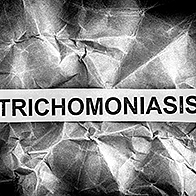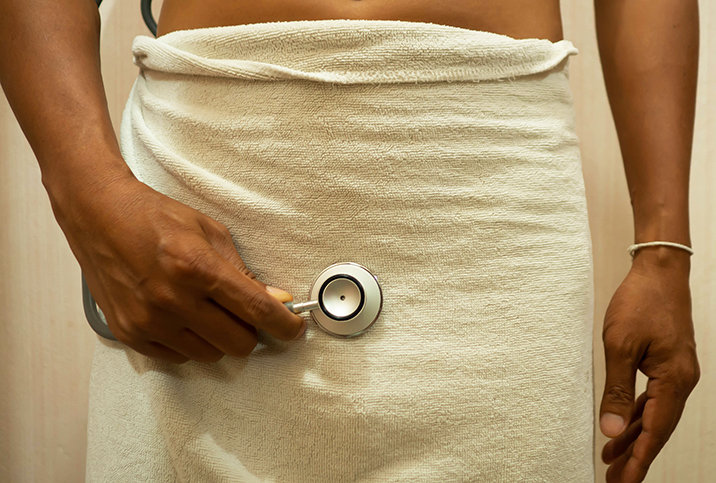The Gift of Health: STI Tests

Life feels like it gets more frantic every year, and it's easy for our health to get shunted to the bottom of our priority list, especially during the holidays. But it's time to transform your healthcare from another annoying item on the to-do list into a little self-care gift to round out the year.
Among all the health issues we could face in life, there is one group that remains the most stigmatized: sexually transmitted infections (STIs). When they are brought up in conversation, the fear is palpable, and while sex education is gradually improving, rates of sexually transmitted infections are still climbing. Universal safe sex appears to be a distant—albeit achievable—dream.
What are STIs?
There are more than 20 different types of STIs. The most common ones in the United States are human papillomavirus (HPV), chlamydia, gonorrhea, genital herpes and—with a blast from the Victorian era—syphilis.
Less common but no less serious ones include pubic lice, genital warts, HIV, hepatitis, trichomoniasis, bacterial vaginosis (BV) and pelvic inflammatory disease (PID).
The Centers for Disease Control and Prevention (CDC) estimates that 1 in 5 Americans have an STI, and over half the people in the United States will contract an STI at some point in their lifetime. CDC research shows that in 2019, there were 2.5 million new cases of chlamydia, gonorrhea and syphilis, and infection rates are increasing year over year, with the exception of chlamydia.
HPV is the most common STI by far with 79 million people in the U.S. currently infected. Genital herpes comes in second at 24 million, according to the CDC. Syphilis cases have increased by 52 percent since 2016.
Although all age groups are vulnerable, the group most commonly affected by STIs are adolescents and young adults ages 15 to 24.
There is a significant disparity in cases among racial and ethnic minority groups, as reported by the CDC. In 2019, diagnosis rates for Hispanic and Latino people were one to two times higher than those for non-Hispanic white people, and African American and Black people were five to eight times more likely to have an STI than non-Hispanic white people.
Testing for STIs
Unless your physician suspects that symptoms reported in a general checkup indicate an infection, STI tests are not part of a routine medical examination. Usually, they are performed on request.
There is not a singular test that screens for all STIs; each one has its own test. Your physician can determine if you need a specific test or a general screening.
"The doctors work with saliva and urine, or they might have to take a vaginal swab, but not necessarily," said Juliette Karaman, a sex and relationship coach, mentor and writer based in the United Kingdom. "There are many tests: chlamydia, herpes, gonorrhea and more. For example, chlamydia is one that I often tell my peeps to get tested for because you don't notice it and it is very easily transferable."
Some STIs have similar symptoms, so a doctor or nurse may test for multiple possibilities. Options include a urine test, which detects chlamydia and gonorrhea. A blood test, where the doctor takes blood from your arm or performs a quick finger prick test, is able to diagnose genital herpes, HIV, syphilis and hepatitis B.
A cheek swab can also detect HIV. Other swabs may be taken from your vagina, anus, cervix or throat to test for HPV, chlamydia, gonorrhea and herpes.
A nurse or doctor can conduct a physical exam to check your genital area for warts, sores, rashes, irritation or discharge, and use a swab to take a sample of fluid from any sores or blisters.
An examination may reveal an STI immediately, but in most cases, you need to wait a few days or weeks for the results to come back from a lab. However, many clinics perform rapid testing for HIV, meaning you can get a result in less than 30 minutes.
Do not assume that the test is negative if the nurse or doctor does not contact you. Always reach out and check in to get confirmation.
Getting an STI test
"Awareness is the key to your treatment," Karaman said. "Regular testing can help us to deal with the infection faster and it can also help us not to pass the infection to a partner."
Anyone can get tested for an STI, even if they do not have any symptoms. Regardless of how trustworthy a person appears, practice safer sex by using protection for oral and penetrative sex. It is particularly important to get tested before having unprotected sex with a new partner.
"The regularity doesn't depend on our age; it depends only on our sex life, how sexually active we are, and what methods of contraception we use," Karaman said. "If a person is sexually active and changes partners, they need to get tested for STIs every six months. If they're very active, then even every three months."
Accessing an STI test is a straightforward process. In the U.S., STI testing is accessible for free or at a reduced rate for people with health insurance. Most tests cost between $0 and $25. For people covered by Medicaid and assistive government programs, testing is free or low cost. Some health centers, such as Planned Parenthood, offer free or low-cost testing, depending on your income.
However, access relies on the existence of centers, and people living in rural areas may have to travel to find an appropriate center. For more common STIs, such as herpes, chlamydia and gonorrhea, you can order a test online and perform the test yourself.
"One thing that is often overlooked when it comes to STI testing is accessibility," added Damian Weatherald, a sex educator based in the U.K. "Disabled people often find it hard to access STI testing, and this can be for a variety of reasons. This may be due to difficulties going to the sexual health clinics due to access issues. Other reasons include physical impairments, such as dexterity issues or vision impairments, making it difficult to do the tests."
Disabled people are rarely asked about their sexual health, making it harder to secure appropriate care, as Weatherald explained.
"It can be a daunting process for some disabled people, and this can lead to them not accessing the service at all, putting themselves at risk of issues with their sexual health," Weatherald said.
What is it like to get an STI test?
The terror I felt before my first STI test quickly dissipated after it was over.
When I was 17, my school invited sexual health nurses to provide some much-needed sex education and free testing for chlamydia, gonorrhea and genital herpes.
We all gathered in the toilets and performed our vaginal swabs one by one. It felt unnatural inserting a swab inside my vagina, but it was all over in minutes and I packed it up ready to be sent to the lab. Within a few days, my test came back negative for all three STIs.
Looking back, I should have gotten a test immediately after becoming sexually active to create a baseline. Since my first seamless experience, I get tested once a year, increasing to every six months when I am casually dating.
Throughout a decade of tests, I received only one dreaded "You need to come in" phone call. At 23, I contracted chlamydia. Despite the immediate panic, everything was fine.
The nurse at my local sexual health clinic prescribed antibiotics, which cleared up the infection within seven days. I also had to refrain from having sex for 14 days. The awkward part came when I notified past partners. I called each person and encouraged them to go and get tested.
Although I felt ashamed, thanks to the stigma we attach to STIs, it was a painless process. My sexual health clinic reminded me that notifying people I could have infected with chlamydia would make them aware to seek treatment and potentially protect others from catching it. No matter how weird it feels, notification is a necessary part of STI testing.
Getting over the fear
"You shouldn't be anxious about getting tested for STIs," Karaman said. "I usually tell my clients that it's like going to the mouth hygienist; it's like your dental care. If you had problems with any part of your body, you would go to a doctor and take care of it. Your sexual health is your health, too."
Reframing STI tests as self-care, instead of something to be feared, can empower people beyond measure. They no longer have to be viewed as a scary event, but only another item to check off a list of preventive health measures.
We are making progress in the destigmatization of STIs and they should not be feared. Many are now curable, but they cannot be healed unless you know they exist. Among the incurable STIs, all are manageable; even HIV, which is by far the most stigmatized, can be treated to become undetectable.
Without awareness of your health status, you cannot enjoy one of life's greatest gifts: sex. Knowledge is power, and with it, everyone can engage in sex safely and joyfully.
Instead of shying away from your fears, confront them. Stop allowing STI tests to be a source of fear and gift yourself a test to shield yourself—and others—from harm.
For some people, confronting their fears might be easier with an initial video appointment rather than an in-office visit. Telehealth has made that a more standard practice, as physicians continue to add it as a service. Giddy telehealth is an easy-to-use online portal that provides access to hundreds of healthcare professionals whose expertise covers the full scope of medical care, including STI consulting.




















